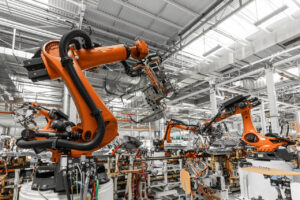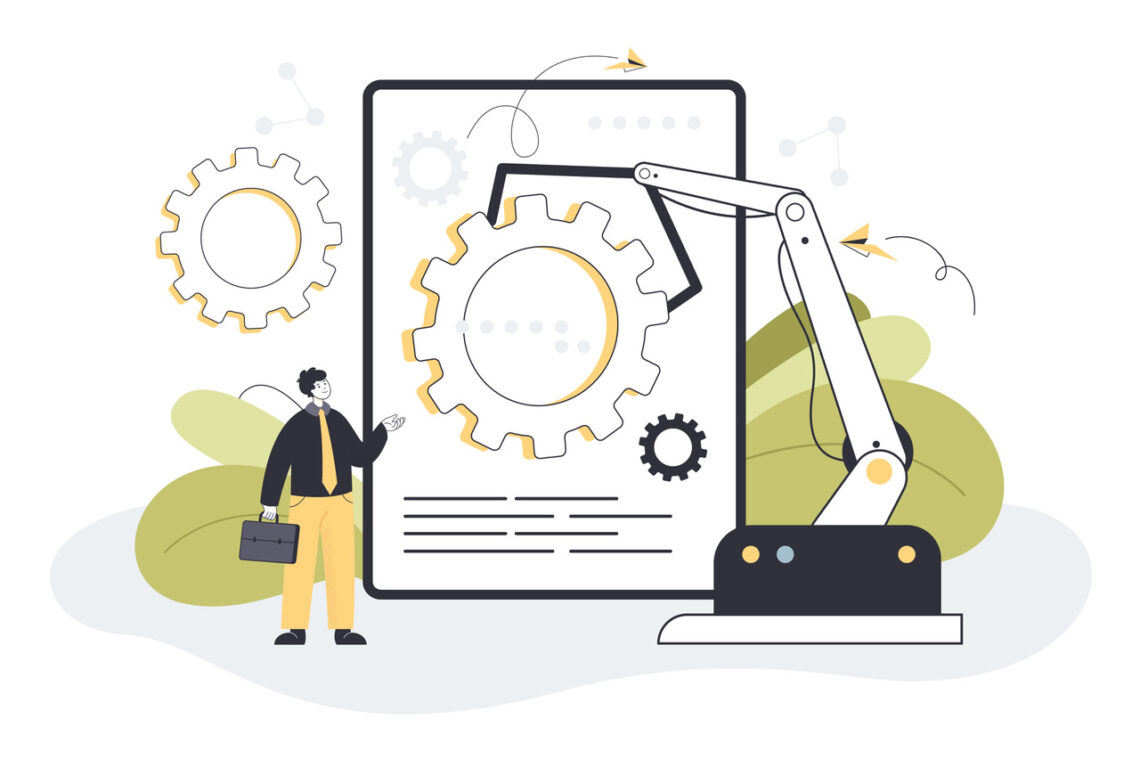 Welcome back to a new series of blogs from Rucha Yantra. This time, we are talking about a new albeit already-established trend in manufacturing – Manufacturing Automation. A trend that Rucha Yantra is participating in and contributing to a lot as well. Let’s begin!
Welcome back to a new series of blogs from Rucha Yantra. This time, we are talking about a new albeit already-established trend in manufacturing – Manufacturing Automation. A trend that Rucha Yantra is participating in and contributing to a lot as well. Let’s begin!
Manufacturing automation refers to equipment and software that automates production systems or processes. Automation serves broadly two purposes – increasing production capacity or reducing costs, often both.
Automation in manufacturing has come a long way – from using basic hydraulic and pneumatic systems to today’s modern robots. Most notably, industrial automation enhances and transforms those activities that were previously performed manually.
One pioneer type of automation was when the Ford Motor Company, 1913, introduced the car production assembly line. It reduced the car assembly time from 12 hours per car to less than 2 hours per car, leading to increased production rates and profits.
Industrial automation is highly advanced today, with robots featuring high-quality computing capabilities, improved operational degrees of freedom, and vision systems. The quality of products that we consume or the optimized utilization of resources and energy occurring today is possible, to a large extent, due to industrial automation. Moreover, the global industrial automation market is projected to be worth over USD 200 Billion.
Types of manufacturing automation:
Fixed Automation – Fixed/ hard automation is a system where manufacturing automation is set to produce a single product within individual machines. It is generally designed to perform only one function. Fixed automation is associated with large volume production of single parts.
Some examples are assembly lines, chemical manufacturing processes, and material conveyor systems.
Check out Rucha Yantra’s set of Special Purpose Machines and Robots designed to improve the efficiency of particular operations.
Programmable Automation – Programmable automation, as the name suggests, is a production system that relies on a program to govern it. Programmable automation can perform several functions and produce multiple items in a short duration of time. This is associated with batch production, where various parts can be made.
Examples of programmable automation include industrial robots and programmable logic controllers (PLC).
Flexible Automation – It is similar to programmable automation. The advantage of flexible industrialization is that one can reprogram it to perform different functions. This is associated with real-time or on-demand production, where-in a central computer system controls production and material-handling systems.
Examples of flexible automation include assembly lines, robotics, and material handling systems.
The Benefits
- Higher Productivity – End-to-end factory automation can often more than double the production compared to facilities that use only a few automation systems. Furthermore, fully automated equipment can usually keep running for prolonged periods with a relatively small impact on the maintenance outlook.
- Lowering costs – Through automation, manufacturers can simplify the complicated process of manufacturing a product. This helps to make the process efficient, which results in various cost-cutting measures.
- Workplace Safety – Thanks to automation, factory workers do not have to worry about factory hazards or accidents as life-threatening processes are commissioned to the automated robots.
- Reduction in labor cost & increase in labor productivity – Investing in automation can help to replace manual operations and, thus, reduce increasing labor costs. Apart from this, it helps in performing tasks in a much more efficient fashion than manual operations.
- Superior product quality – Automation reduces the defect rate, and automated operations are performed with greater conformity and uniformity.
Market trends and potential in India
The Indian industrial automation market was valued at USD 10.72 billion in 2021 and is expected to reach USD 23.09 billion by 2027.

There are several factors like the Government trying to create a conducive environment for manufacturing & exporting goods, revolutions happening in the Industrial Internet of Things (IIoT), and the adoption of e-commerce which are helping manufacturing automation take shape.
Besides the above, implementing artificial intelligence, 5G, and 3D printing/additive manufacturing is also expected to provide significant opportunities for market growth.
India’s industrial automation sector has been revolutionized by combining digital and physical aspects of manufacturing. Further, the focus on achieving zero waste production and a shorter time to reach the market has augmented the market’s growth.
Here are some of the key trends to look out for in the manufacturing automation sector in the future:
- Increasing implementation of digital twins and AR technology in manufacturing
- Rising adoption of Industrial IoT
- Building intelligent factories with cloud technology
- 3D printing
Conclusion
Industrial automation is already underway and advancing further. We can expect significant developments and more widespread adoption in the coming time, especially among small and medium-scale companies. Rucha Yantra is dedicated to helping manufacturers achieve efficiency through robotics and automation.
Stay tuned to Rucha Yantra’s Knowledge Corner as we go deeper into the topic next time.



